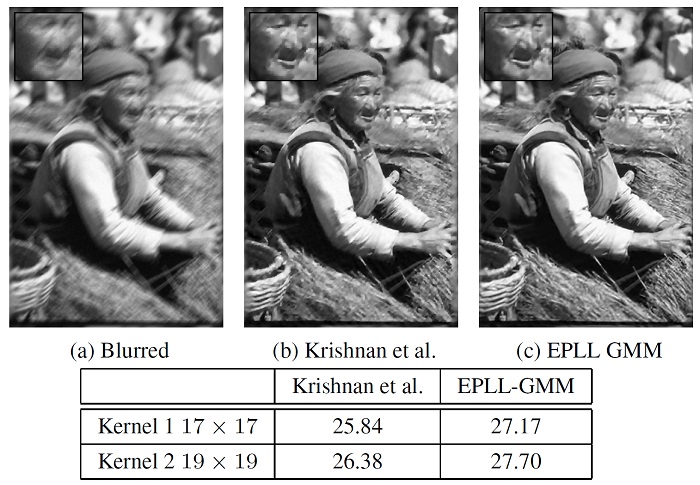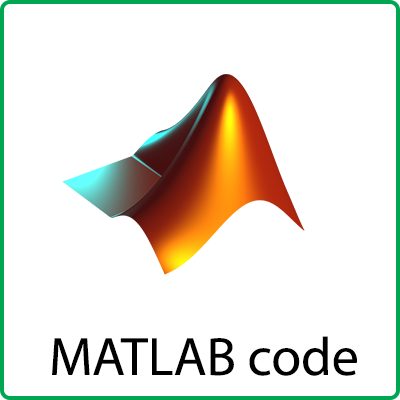Description
Image priors have become a popular tool for image restoration tasks. Good priors have been applied to different tasks such as image denoising , image inpainting and more, yielding excellent results. However, learning good priors from natural images is a daunting task – the high dimensionality of images makes learning, inference and optimization with such priors prohibitively hard. As a result, in many works priors are learned over small image patches. This has the advantage of making computational tasks such as learning, inference and likelihood estimation much easier than working with whole images directly.
We convolved 68 images from the Berkeley database (same as above) with the blur kernels supplied with the code of [1]. We then added 1% white Gaussian noise to the images, and attempted reconstruction using the code by [1] and our EPLL framework with GMM prior. Results are superior both in PSNR and quality of the output, as can be seen in Figure 1.

Deblurring experiments
[1] D. Krishnan and R. Fergus, “Fast image deconvolution using hyper-laplacian priors,” in Advances in Neural Information Processing Systems 22, pp. 1033–1041, 2009.



Reviews
There are no reviews yet.